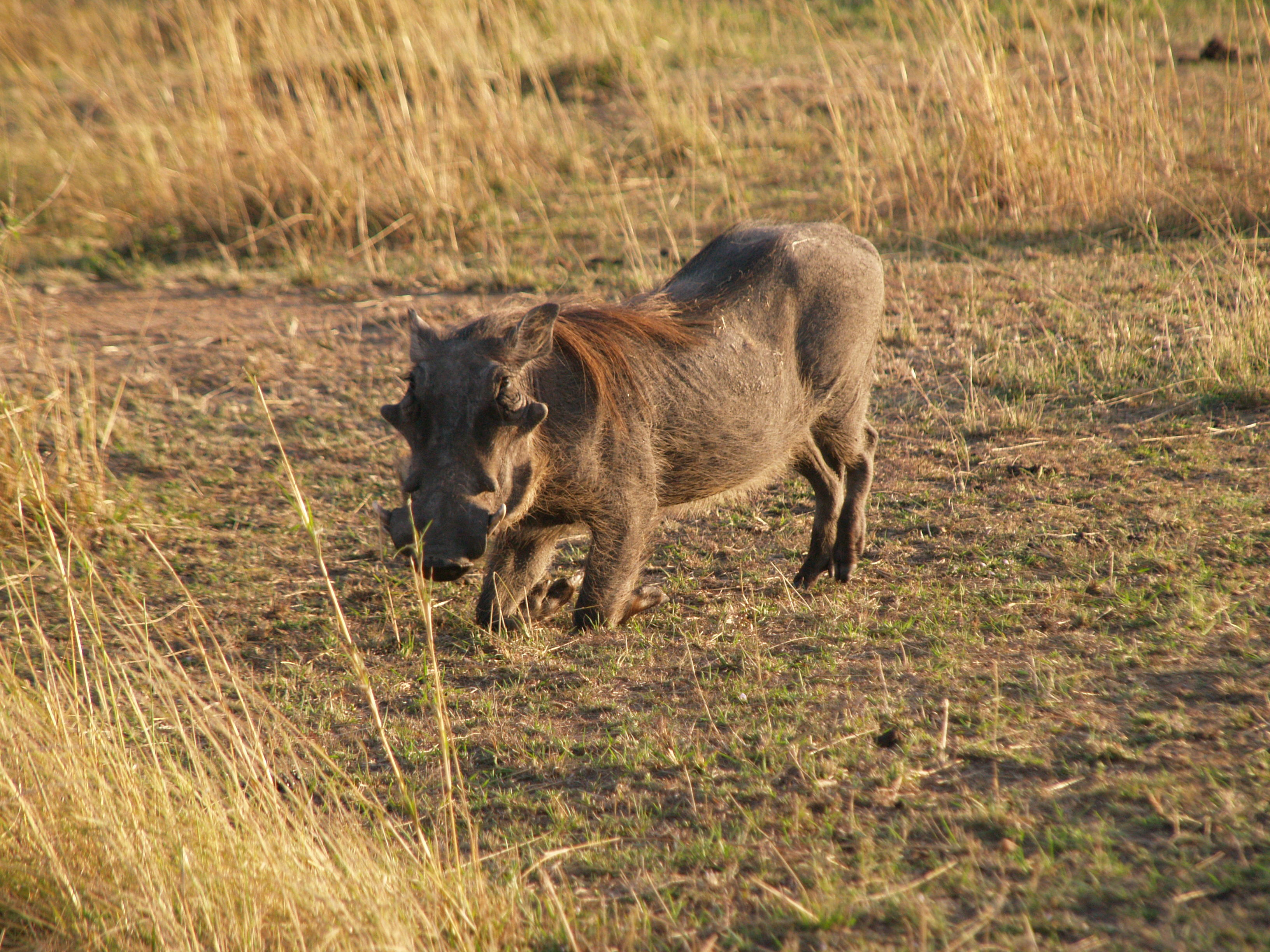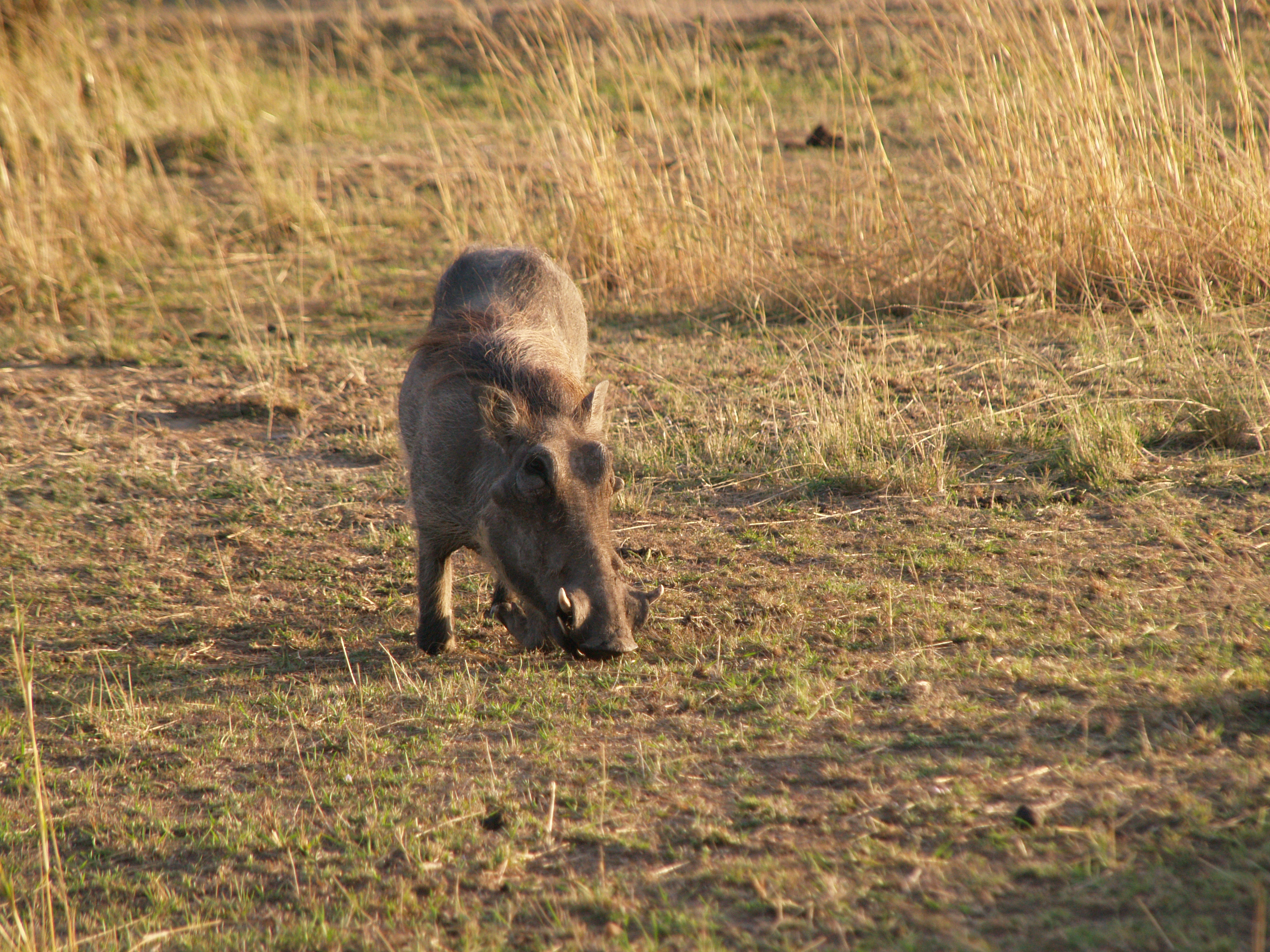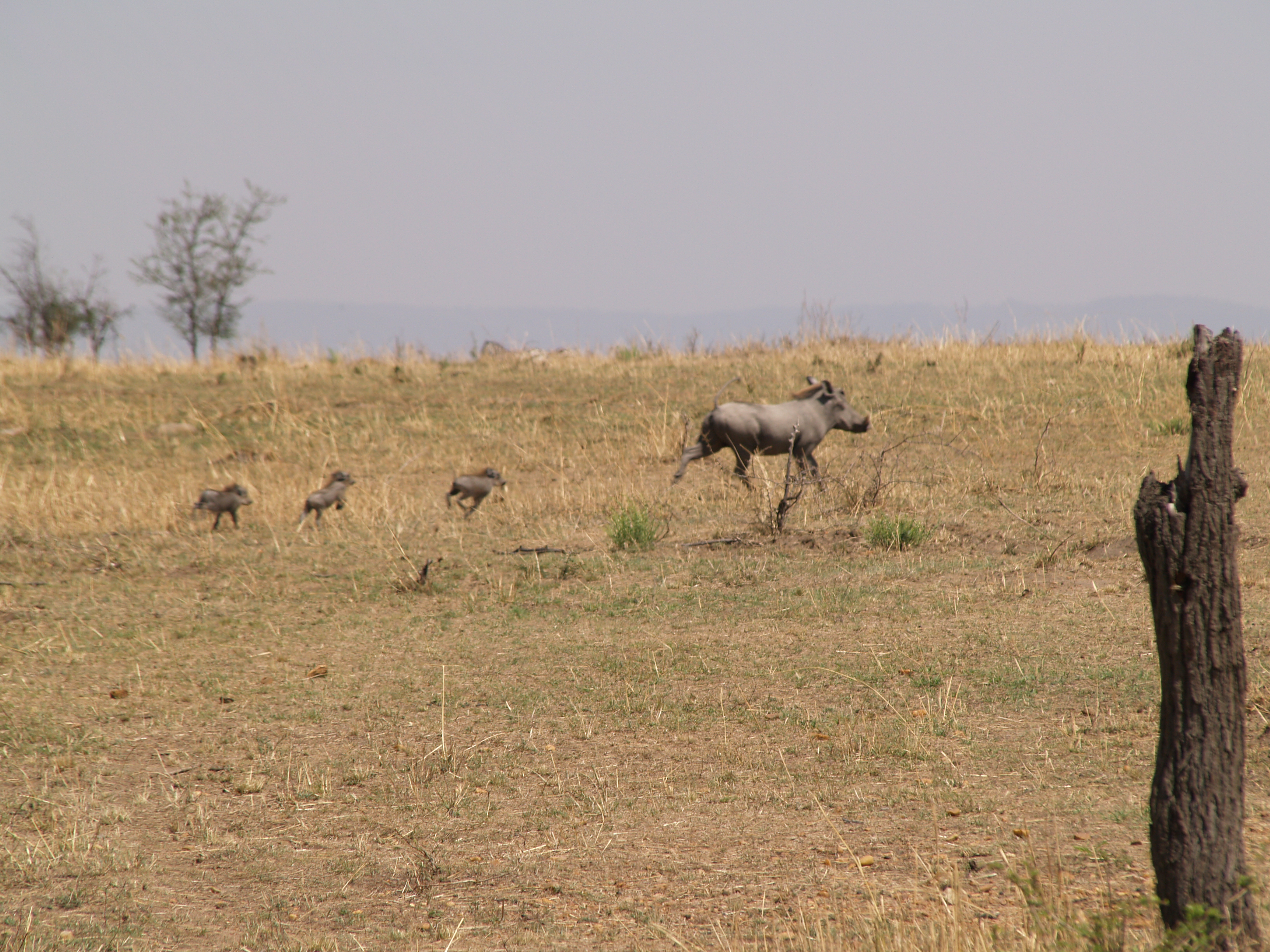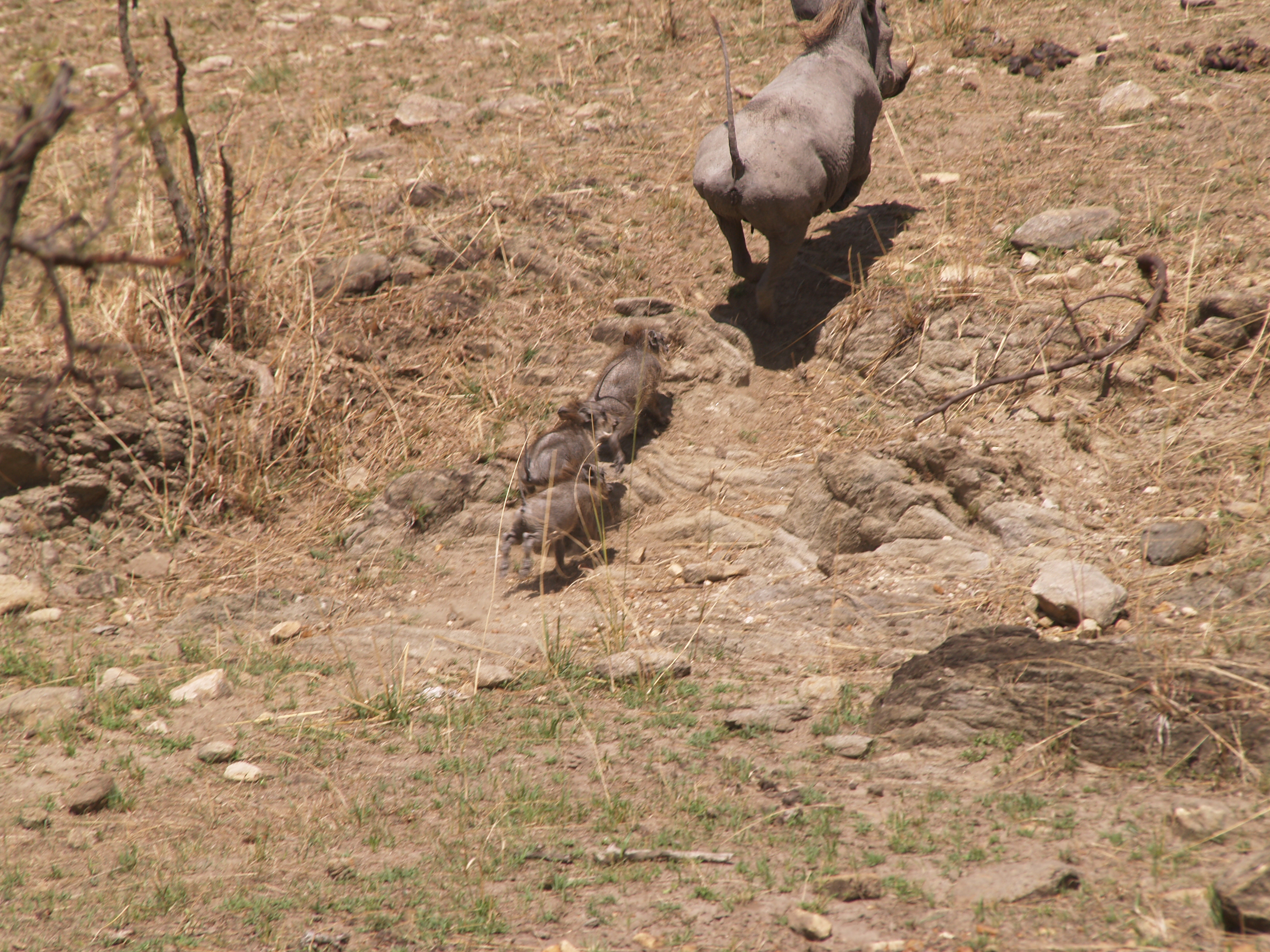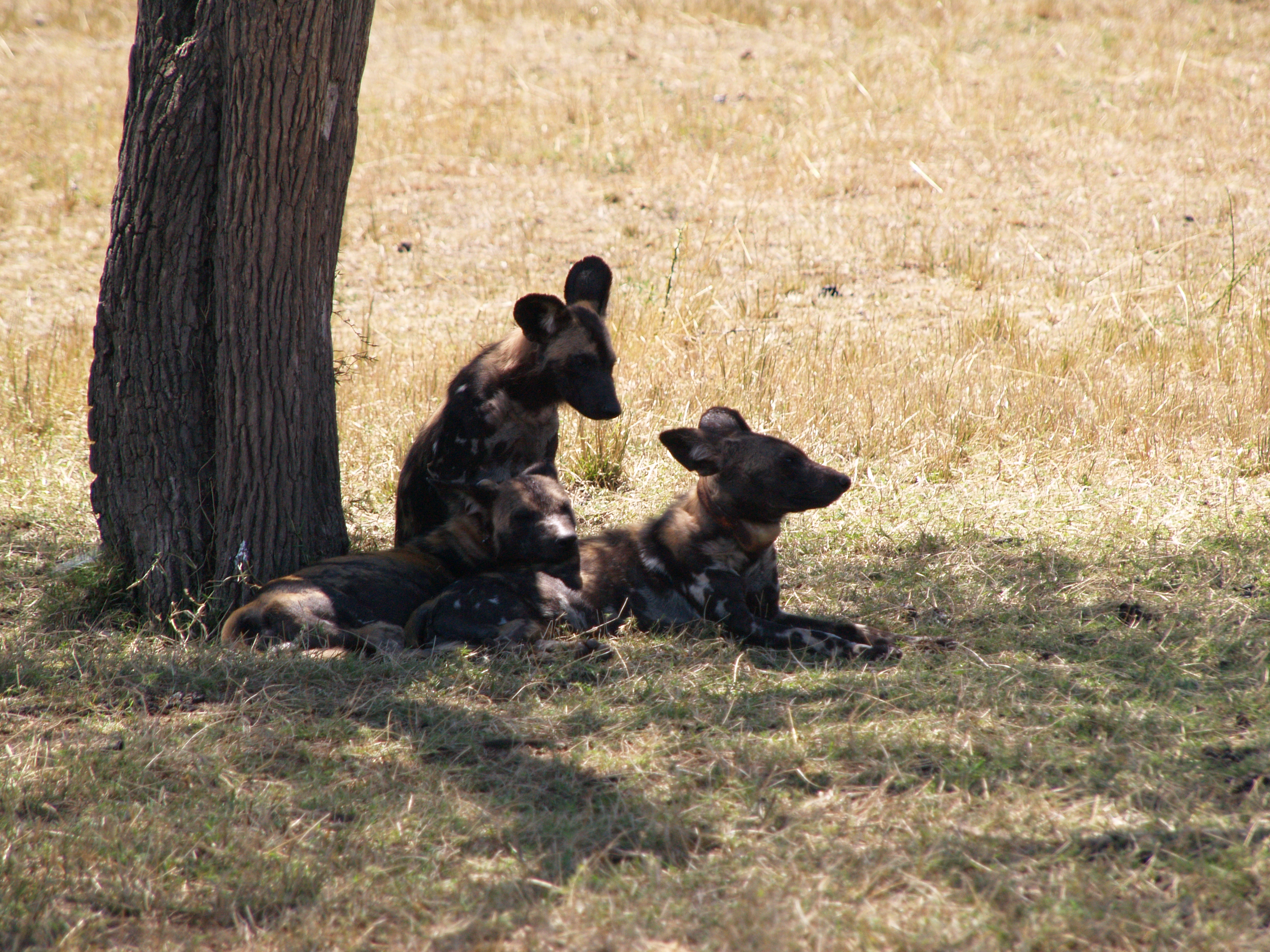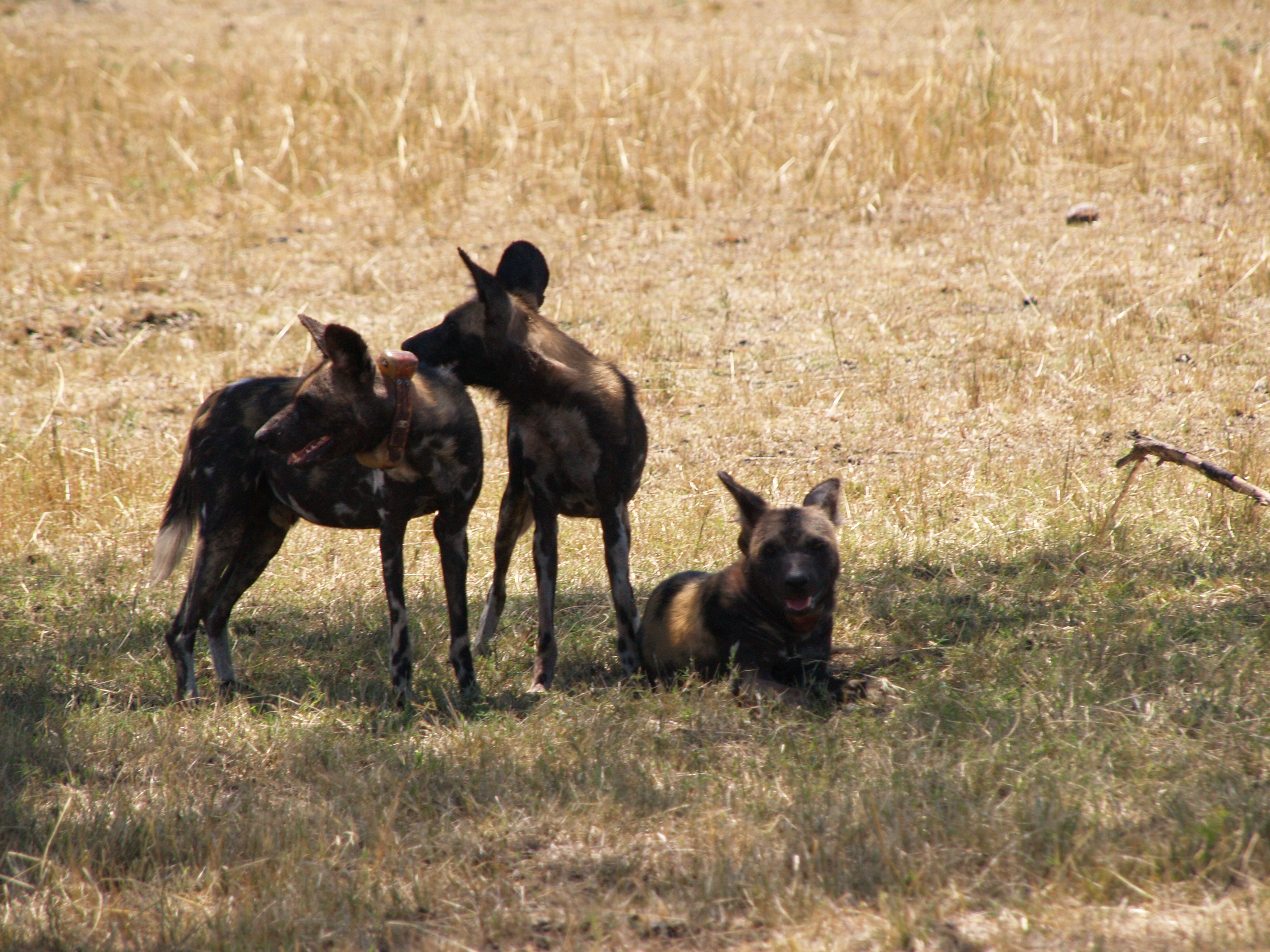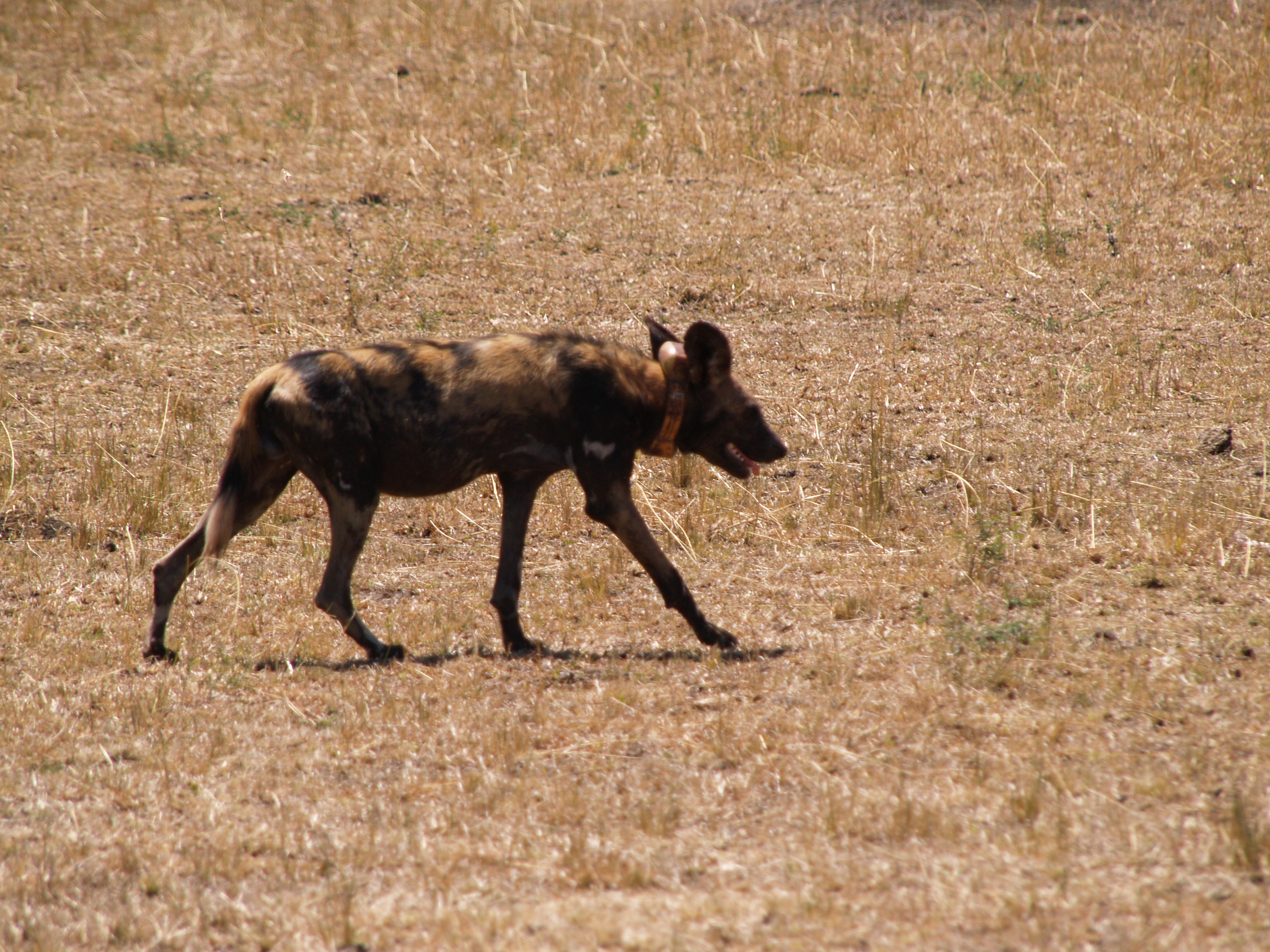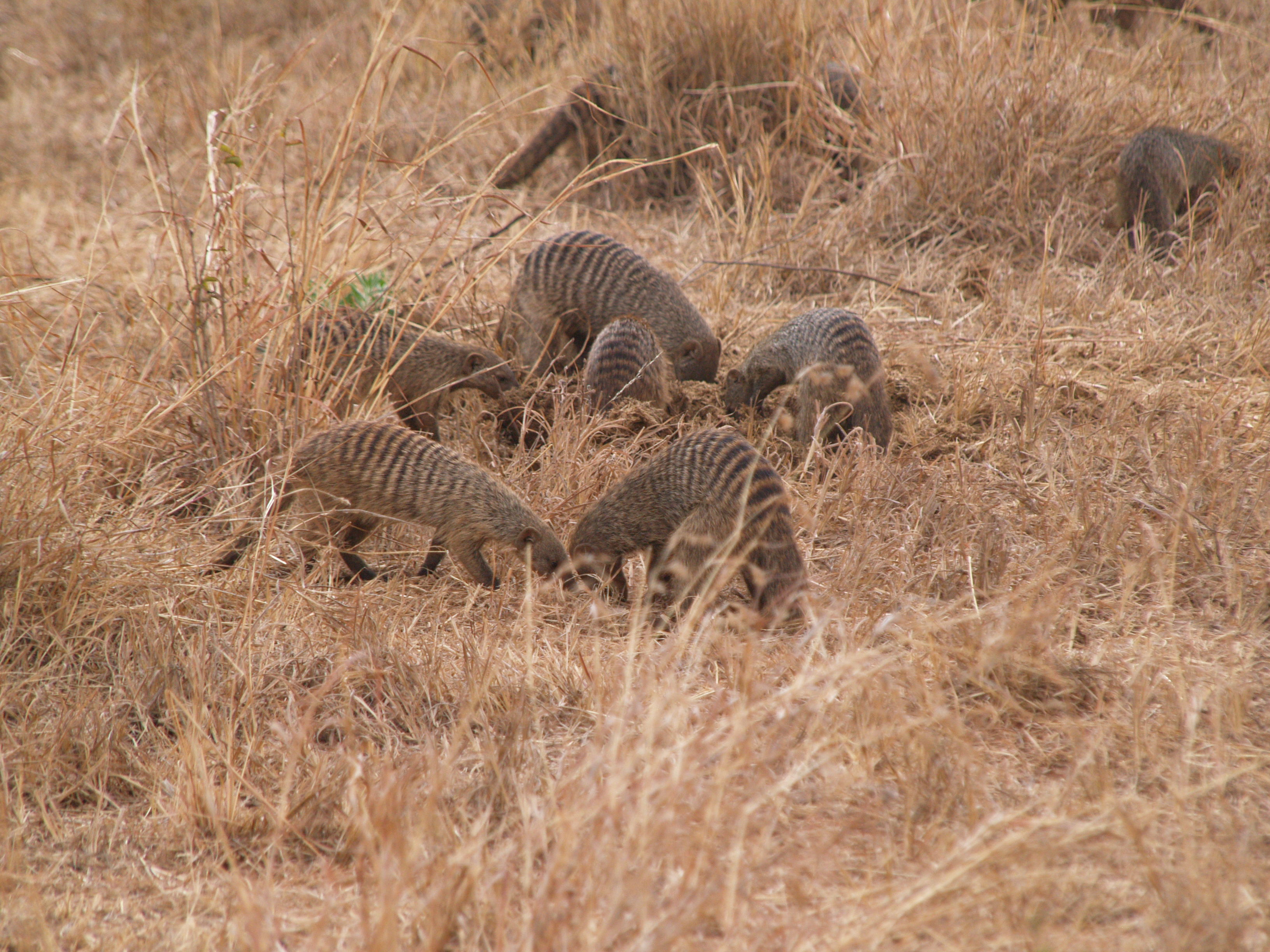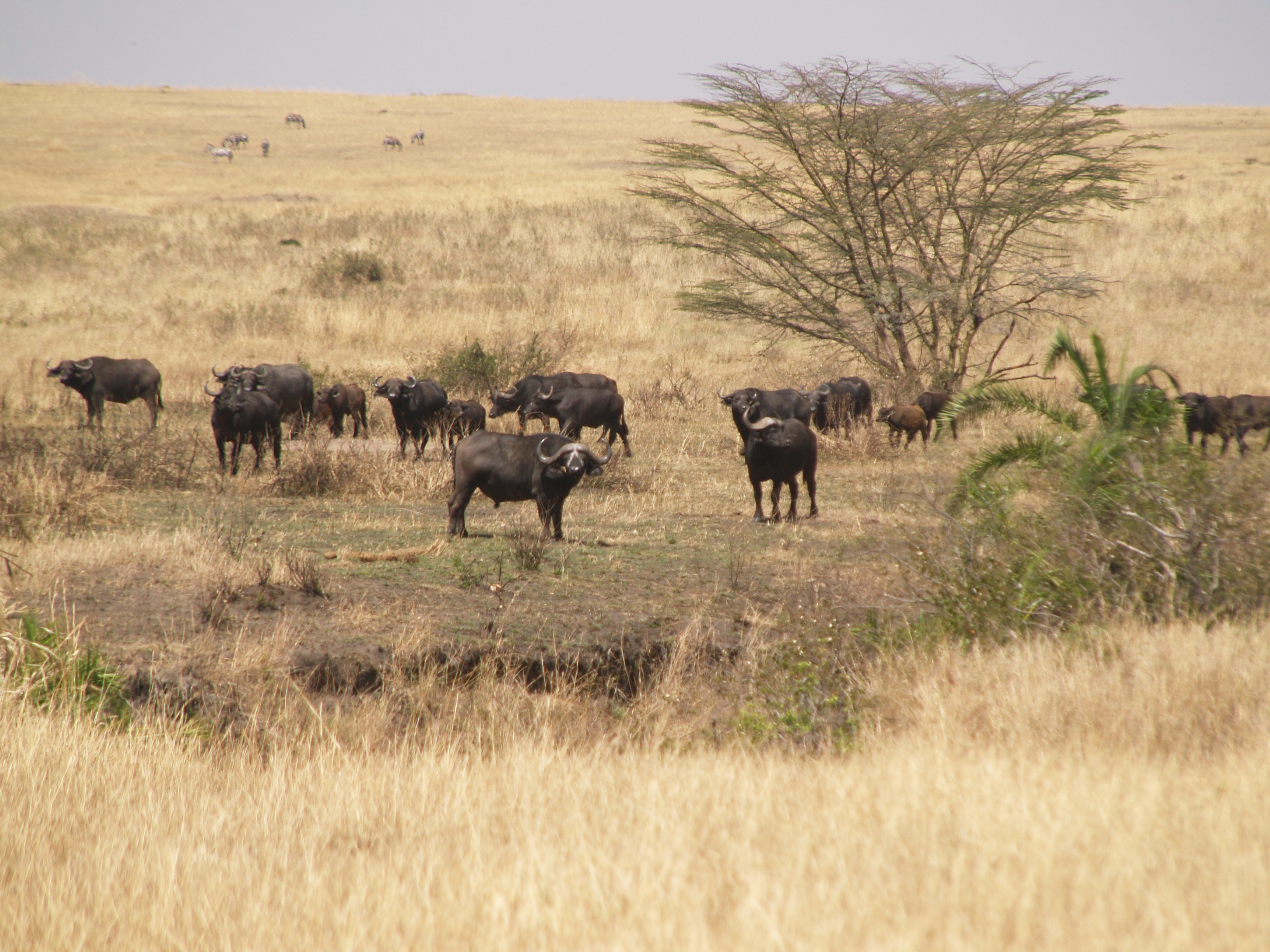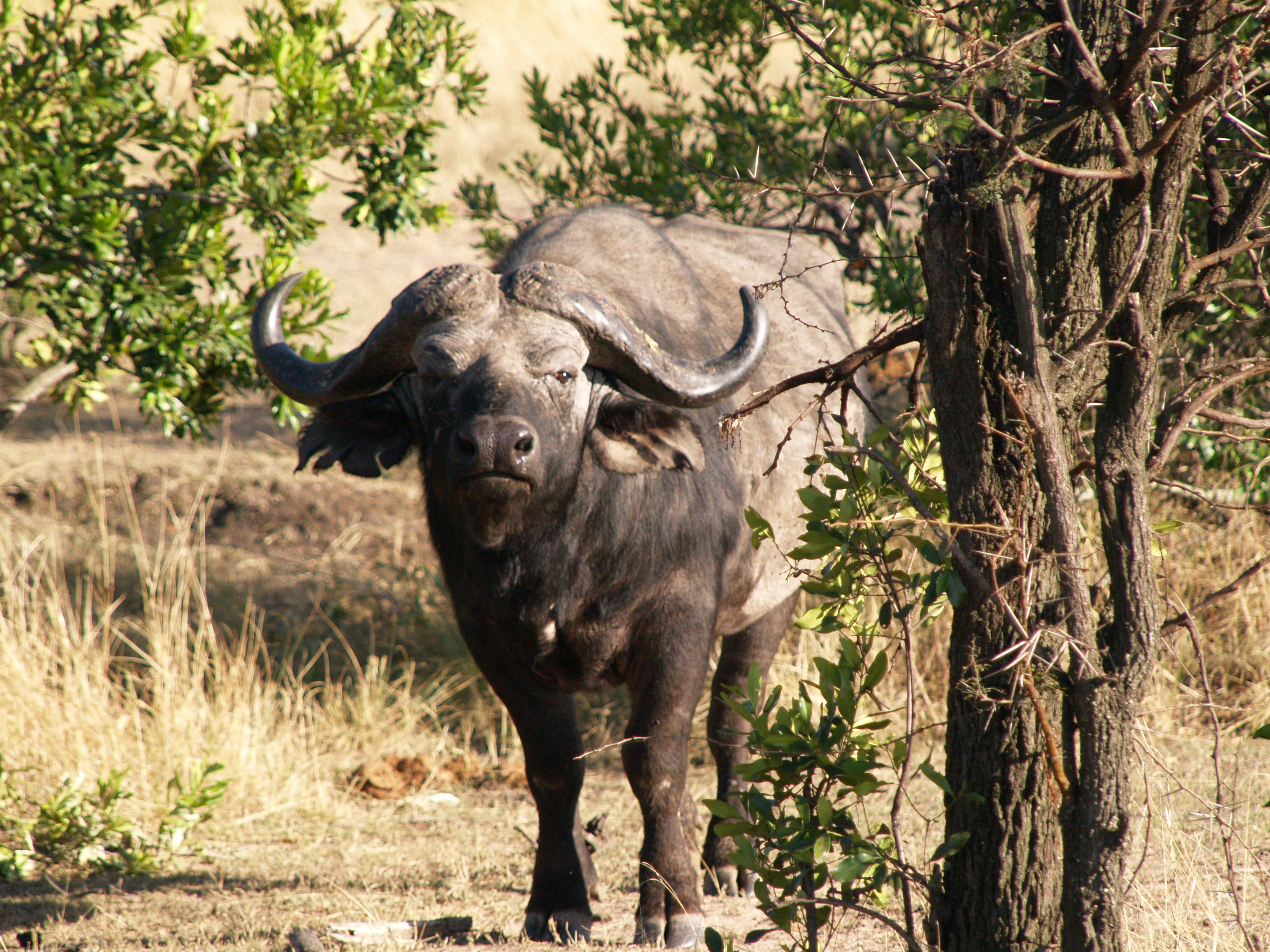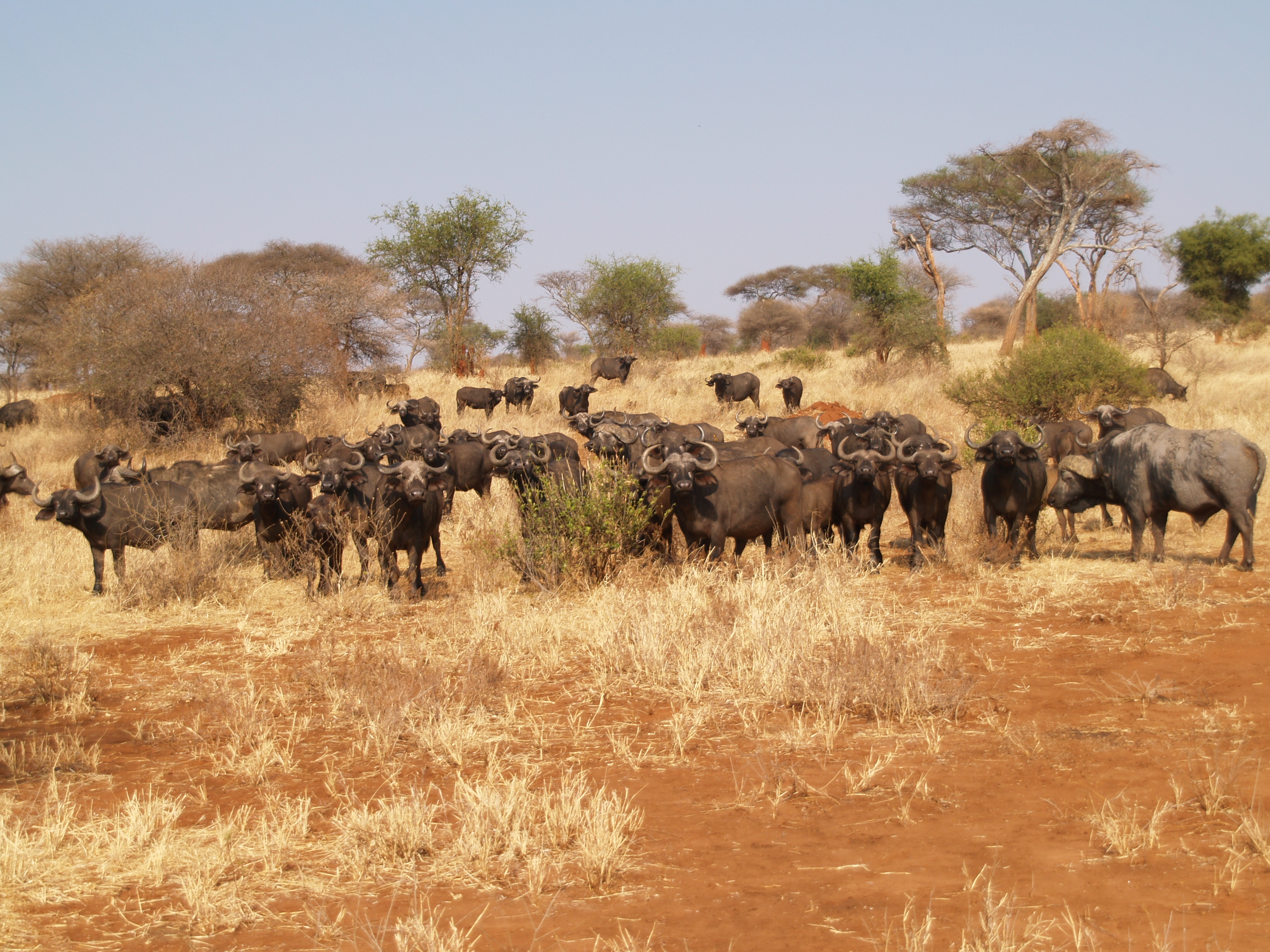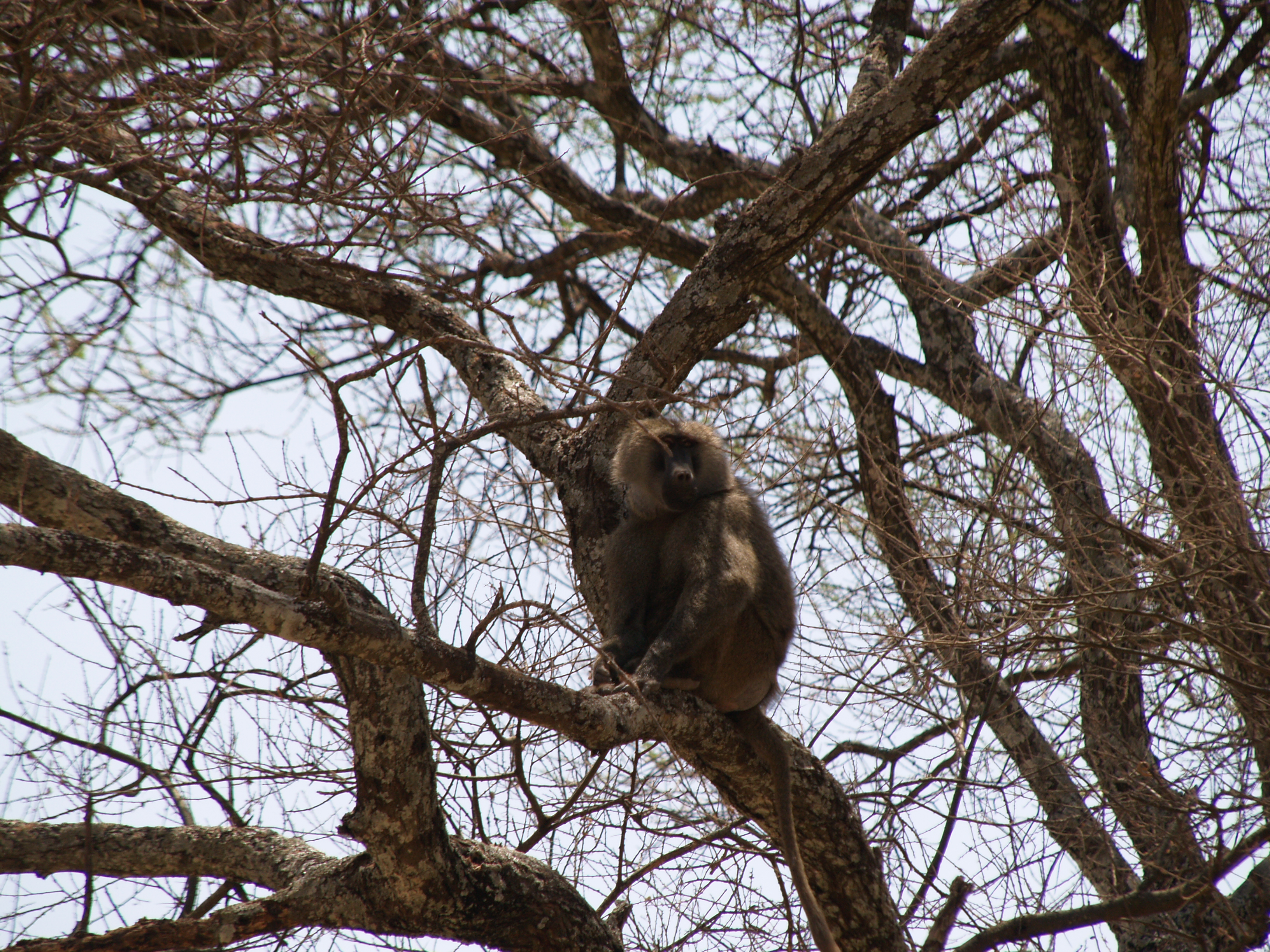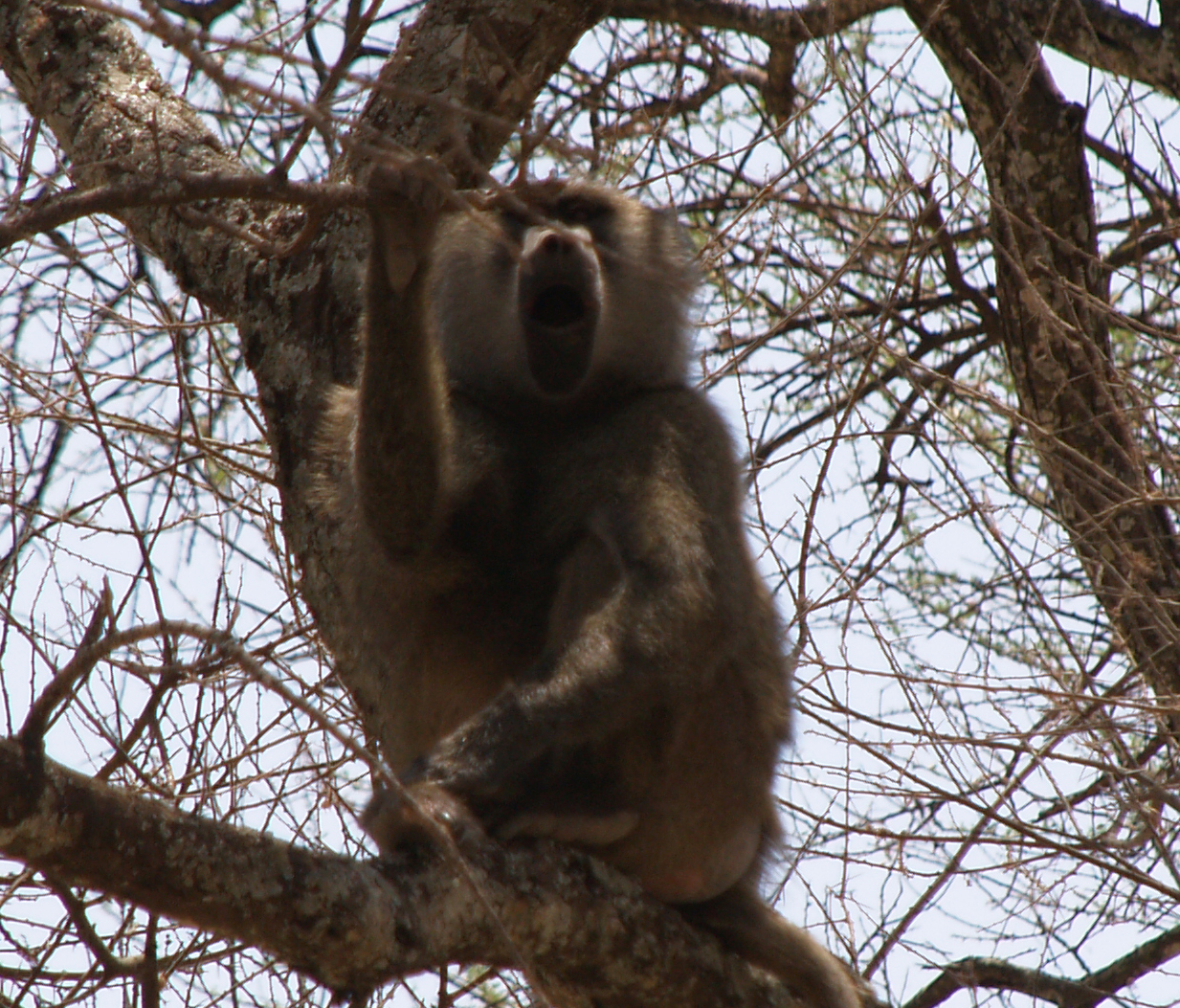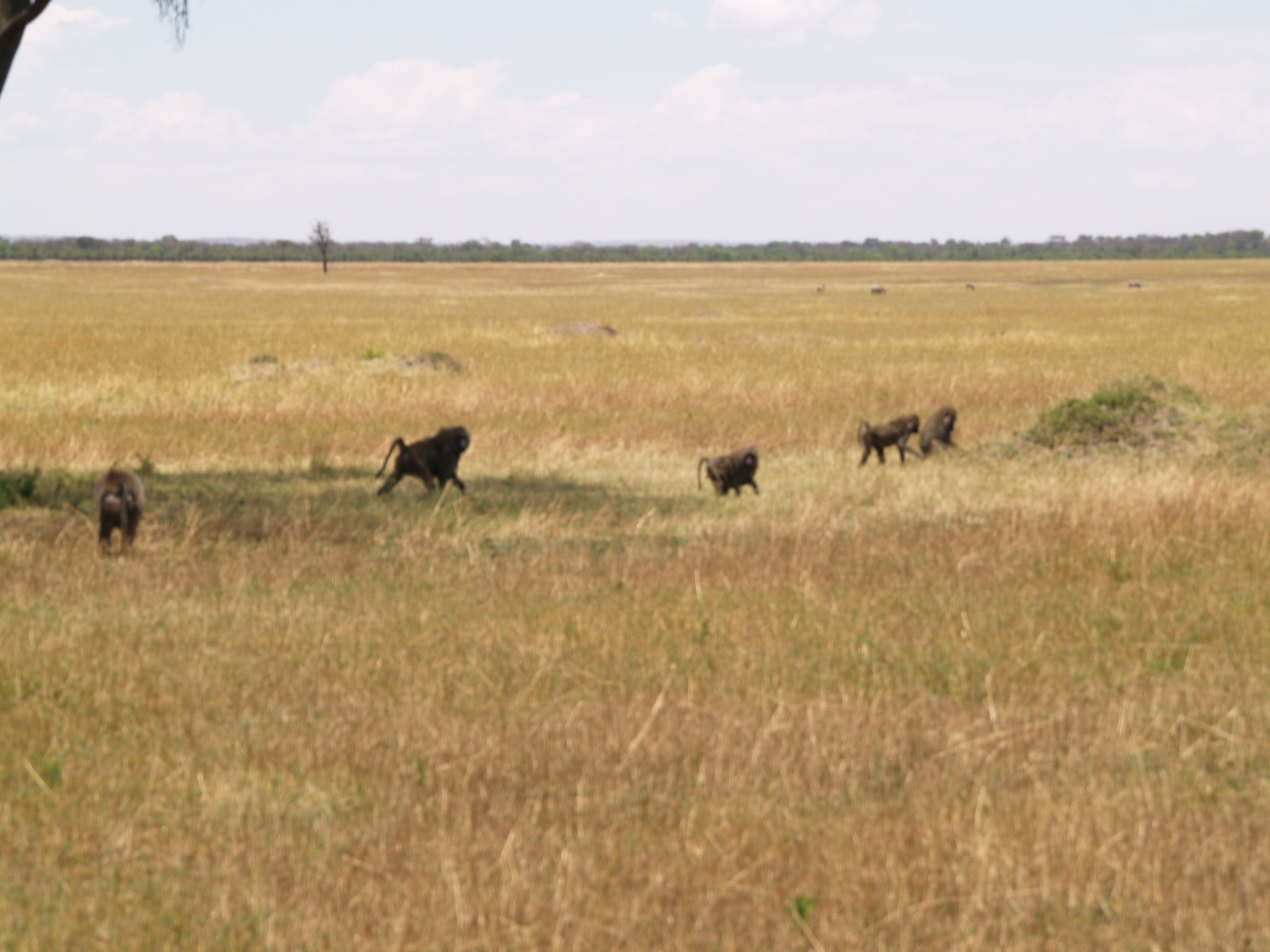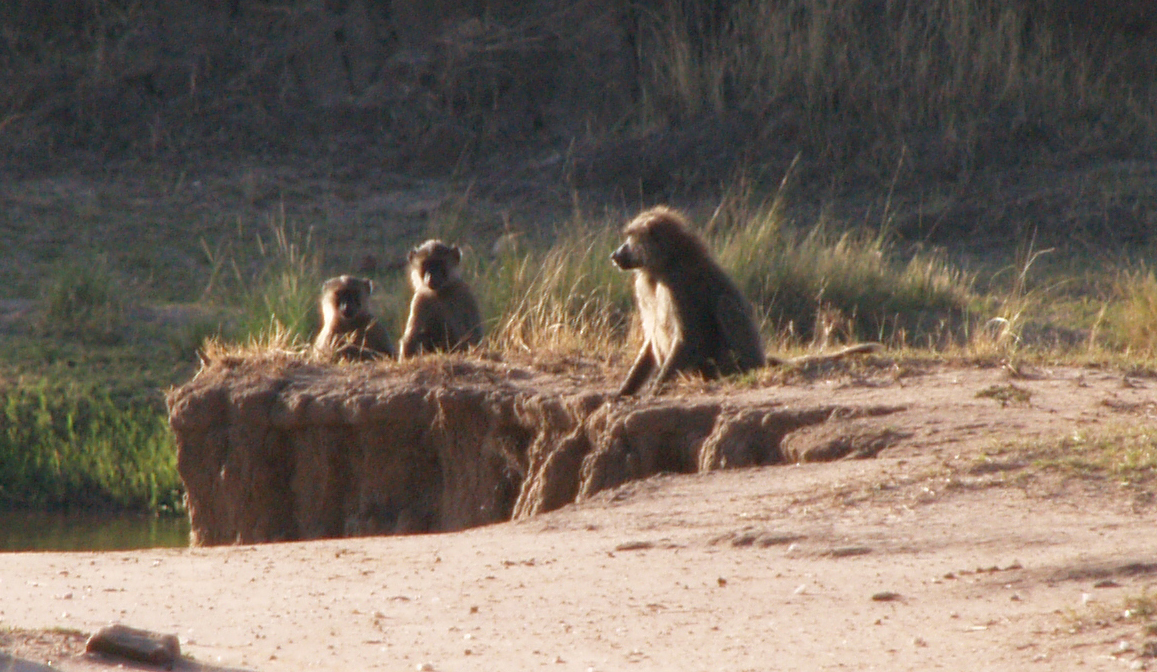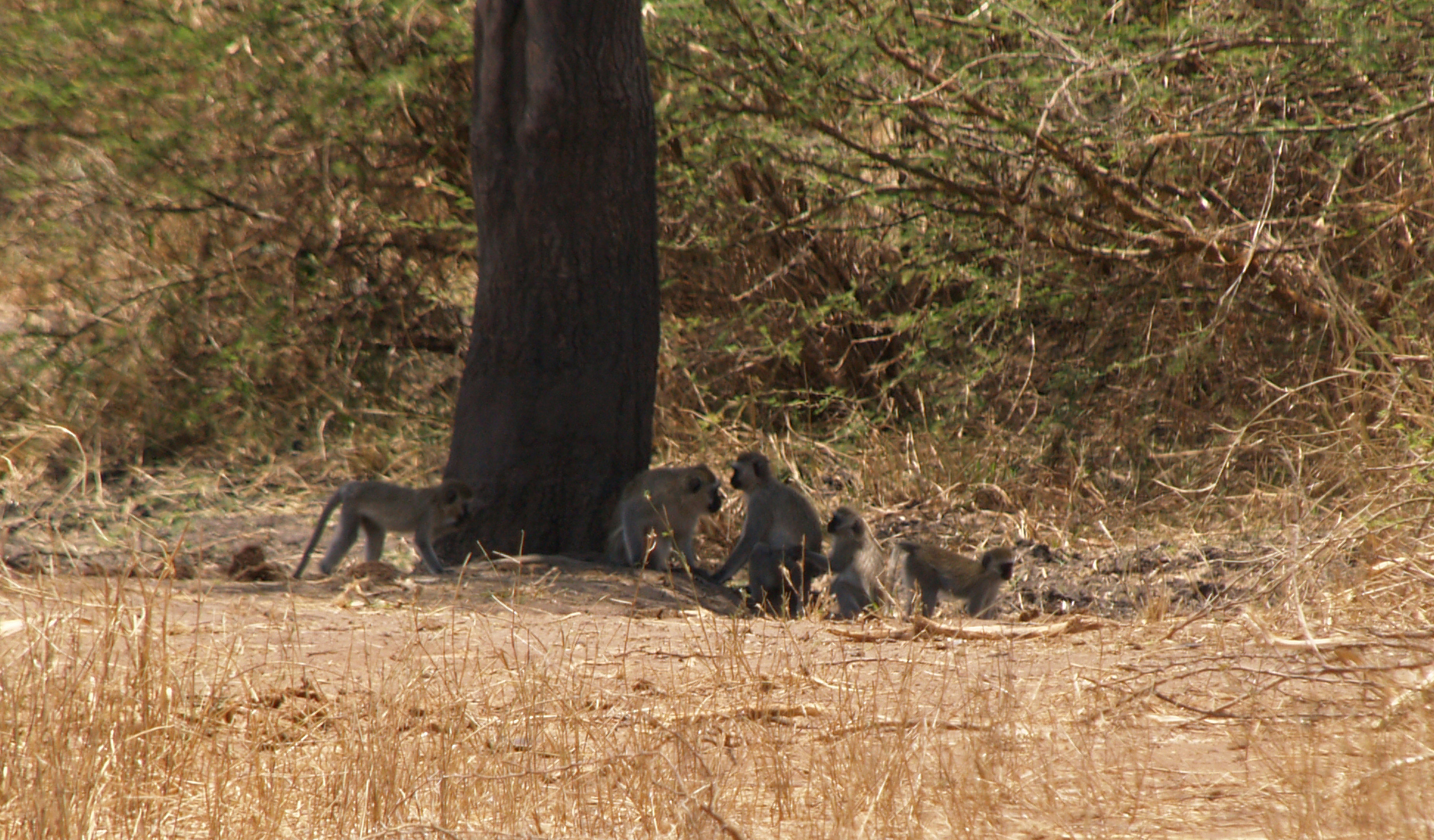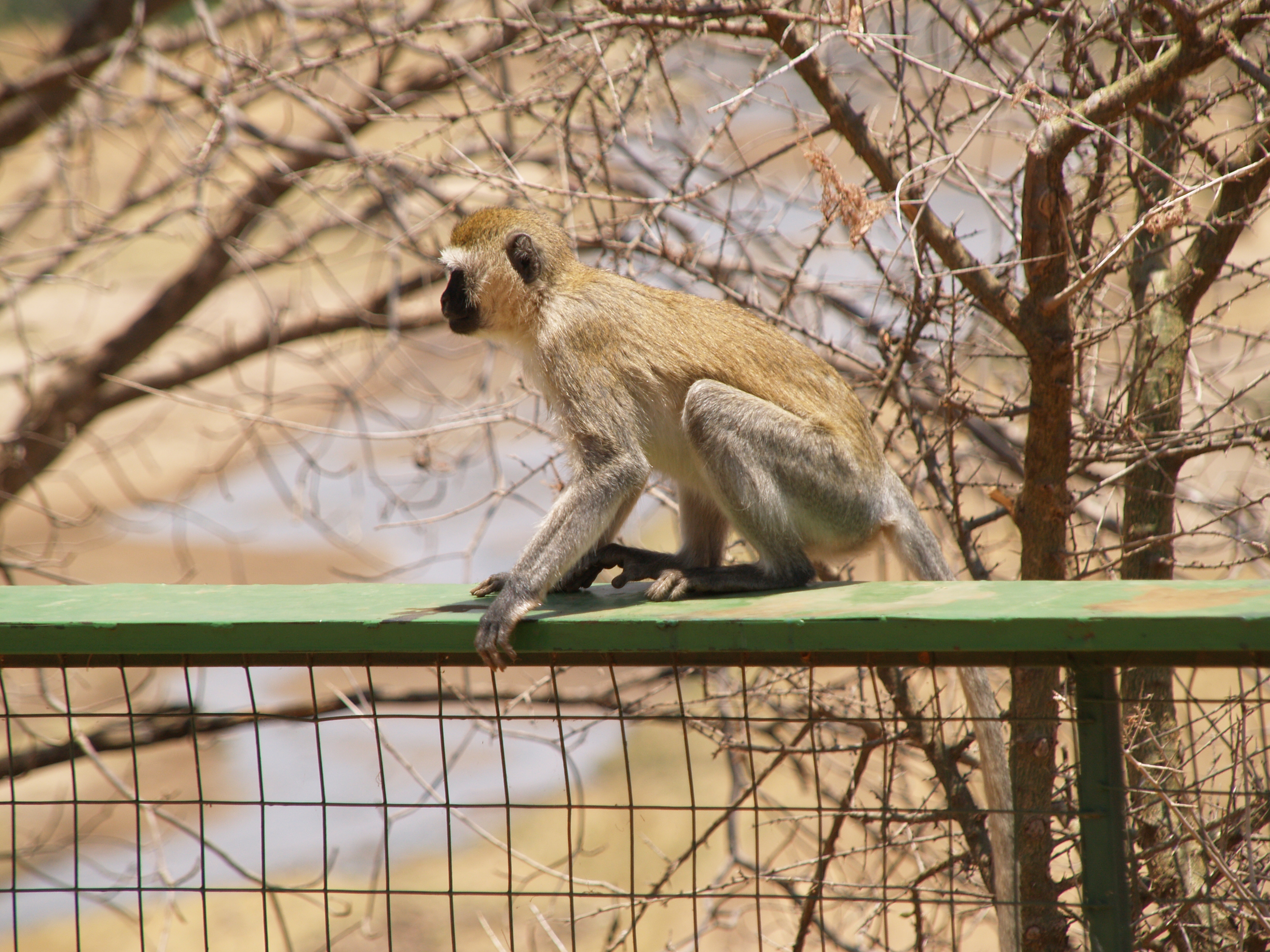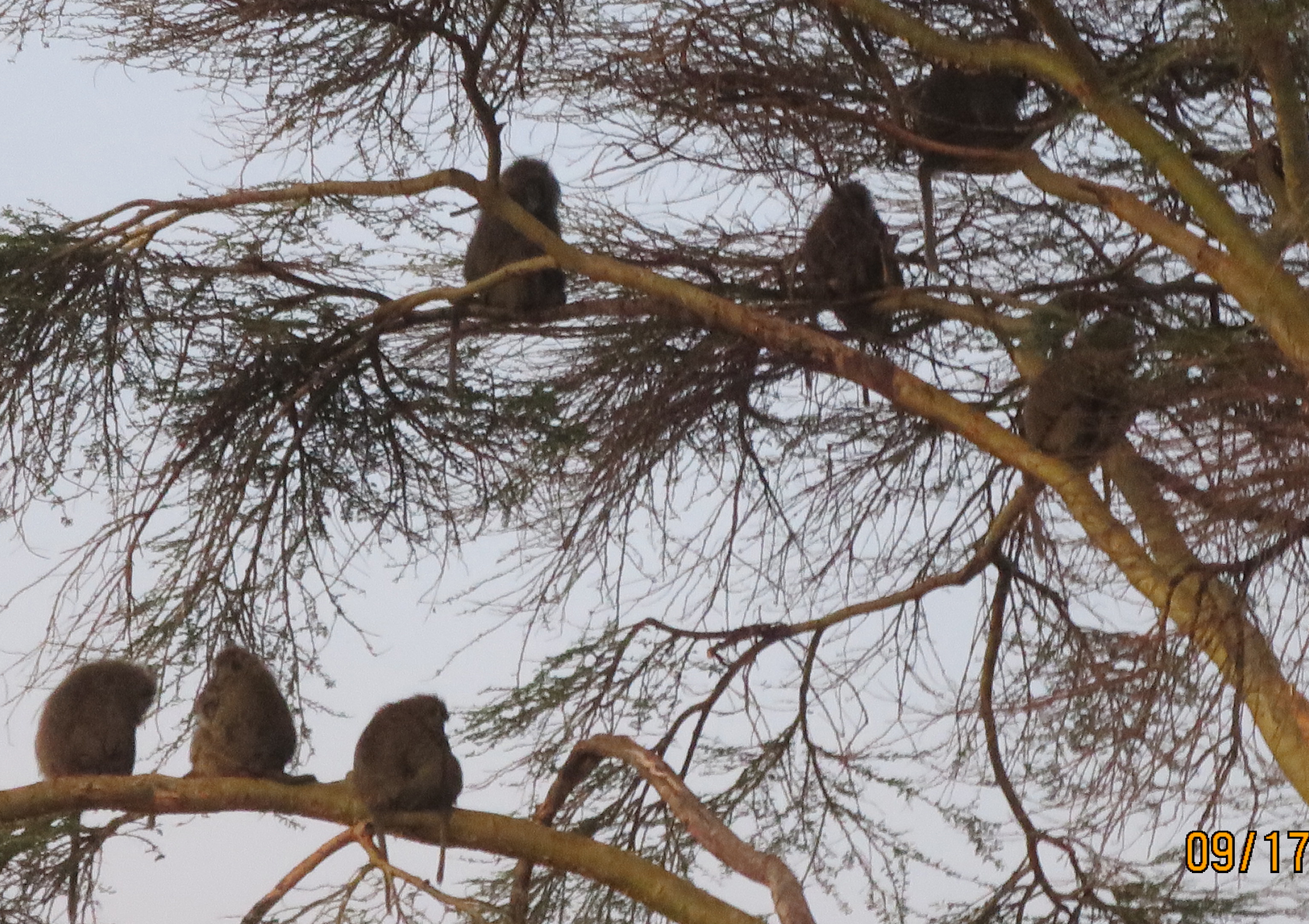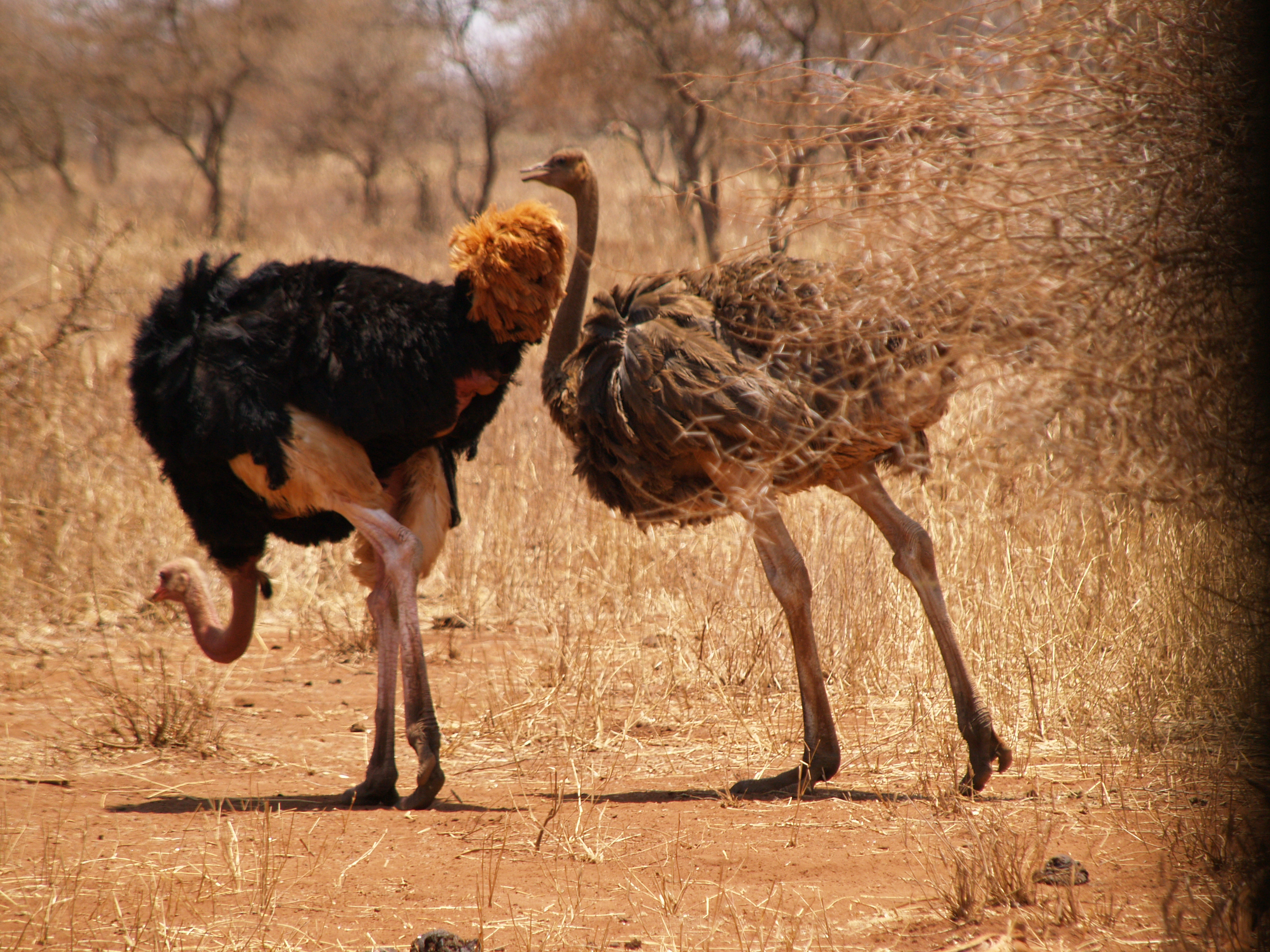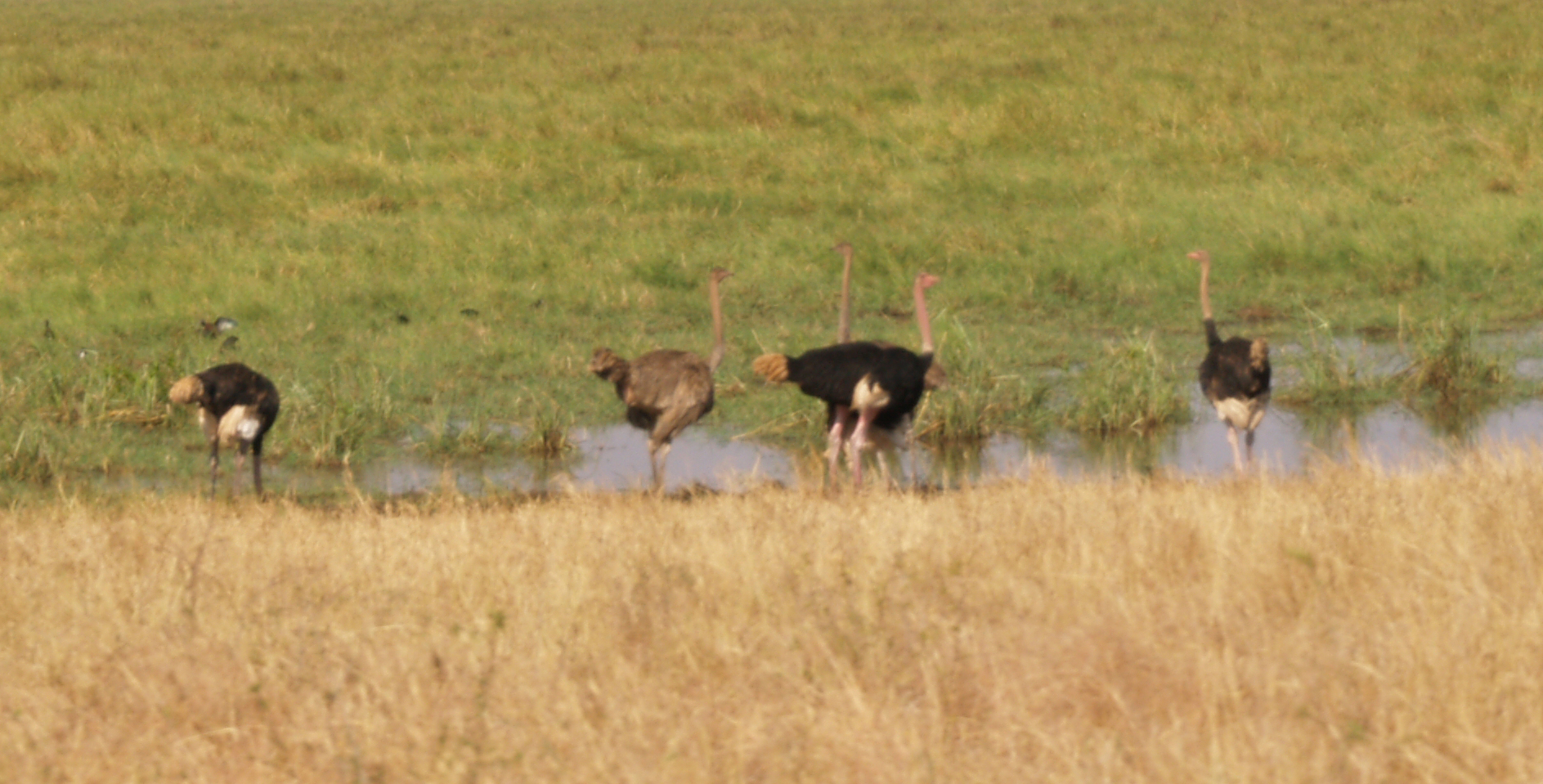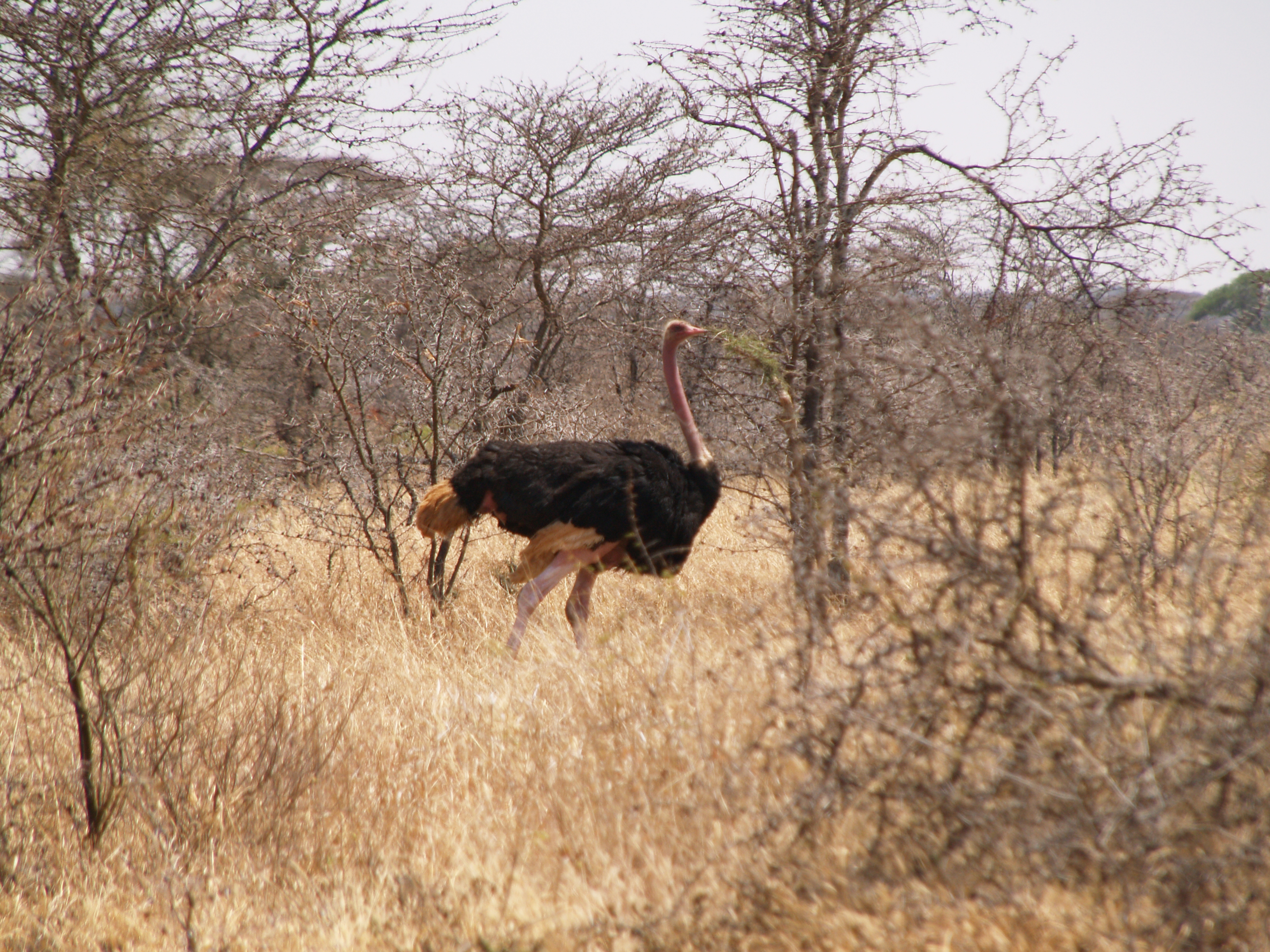The warthog is in the pig family. They have four tusks two larger curved ones and two razor sharp lower ones used primary for digging up roots and bulbs. When threatened they will run up to 30 mph vs. fight. When cornered or protecting their young they will use their tusks against predators, the lower set can inflict severe wounds. When running the female will raise it stringy tail high in the air so the young can follow her through the tall grasses. More info on the warthog.
The African wild dog are incredibly social creatures, living in carefully organized packs in which each dog has a specified job, from hunting to pup baby-sitting. Dominated by a alpha mating pair the dogs relay on each other and are one of the only wild species to care for their sick and old. There population is at 7% of their original numbers because of poaching, diseases and destruction of habitat. At one time thought to be extinct in the Serengeti they have returned in very small packs. Primary feeding on smaller to medium size antelopes. They are specialized pack hunters, that catches prey by chasing them to the point of exhaustion. More info on the wild dog.
The banded mongoose lives in the grasslands, savannas, and open forests feeding on insects, beetles, ants, crickets, grasshoppers including frogs, lizards and snakes. They have a number of distinct bands running horizontally across their back. They have a tail as long as there body and long strong claws for digging in the soil. Living in dens, in small groups averaging around twenty. We saw several groups of them mostly around dead fallen trees trunks looking for insects. Running in all directions when we got to close. More info on the mongoose.
The water buffalo also called the African buffalo are known for their imposing hooked shape horns. Laying flat on their head and then twisting inwards towards the point. The males can weigh as much as 2,000lbs. They spend 18 hours a day constantly moving looking for food. Found mostly in large herds that stick together. When threatened they will charge as a unit to make it difficult for a predators. Oxpeckers and cattle egrets will live around these herds, feeding on the insects flushed out from the grasses as the buffalo walks, they also eating the biting insects from the buffalos skin. In the Serengeti we saw small groups maybe 20 to 50, in the Tarangire we saw herds of up to a thousand. Living in the open forests and woodlands it was hard to take a photo capturing the size of the herd we were driving through. The herds mow down the tall grasses so the more particular antelopes can get to the shorter grasses. Other then a pride of lions and African buffalo has no predators. More info on the buffalo.
The olive baboon is a larger baboon, males weigh as much as 80lbs. Named for its coats that is olive green to grayish in color. They live in troops of males and females of up to 50 members. They forage on the ground during the day and sleep in the trees or high in rocks at night to avoid predators. They feed on grass seeds, leaves, fruits and tubers among other things. It’s predators are lions, leopards, wild dogs, hyenas and crocodiles. More info on the baboon.
The blacked faced monkey feeds mostly on leaves and shoots but also eating bark, flowers, bulbs, foots and so on. Grooming is important to these animals, they spend several hours a day removing parasites, dirt and other material from each others fur. The live in small troops and will seldom venture from trees. They are good climbers, jumpers and swimmers that help them to escape capture from predators. More info on the monkey.
The ostrich lives on the savanna in small herds of less than a dozen. They cannot fly but are strong runners, sprinting up to 43 miles mph. They use their wings as rudders to help change direction when running. Their long legs can cover 10 to 16 feet in a single stride. They hide by lying flat against the ground and press their long necks into the ground or they run away. They feed on plants, roots and seeds. The ostrich is farmed around the world, for its feathers and meat. More info on the ostrich.

